Bluesky will comply with age-verification laws in South Dakota and Wyoming after exiting Mississippi
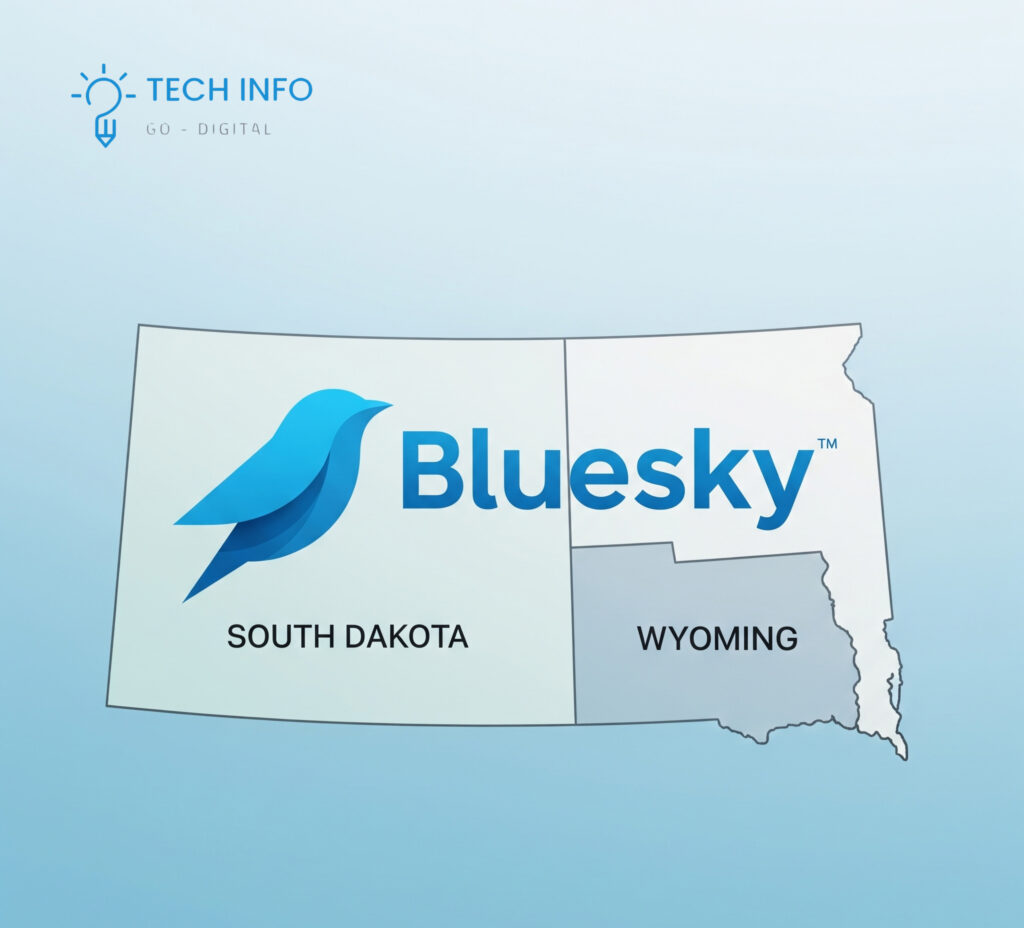
Navigating the Digital Frontier: Bluesky’s Commitment to Compliance and Safety in the American Heartland The digital landscape is not a lawless frontier. It is a evolving space where innovation must responsibly coexist with regulation, especially when it comes to protecting the most vulnerable users online. Recently, Bluesky made headlines with its strategic decision to exit the Mississippi market, a move directly tied to the state’s newly enacted age-verification laws. This decision was not made lightly, but rather as a precise, compliance-driven action. Now, as the dust settles, Bluesky has announced its next steps: a firm commitment to implementing robust age-verification systems to comply with similar laws in South Dakota and Wyoming. This post will explore what this means for users, the technology behind the policy, and why Bluesky is taking this deliberate path through the complex patchwork of state-level internet legislation. The Mississippi Precedent: A Lesson in Legal Scrutiny To understand the future, we must first look at the recent past. Mississippi joined a growing number of states passing laws that require social media companies to verify the age of all their users and, more critically, obtain verifiable parental consent for any user under the age of 18. For a rapidly scaling platform like Bluesky, built on a foundation of open protocols and decentralized social networking, the immediate and technically flawless implementation of such a system presented a significant challenge. The law’s stringent requirements and potential penalties made a rushed, half-measure compliance strategy a legal non-starter. Therefore, the difficult but prudent decision was made to temporarily suspend operations in Mississippi to avoid operating in violation of the law while engineers and policy experts developed a durable solution. This wasn’t an exit in defeat; it was a strategic pause for compliance. The Commitment: South Dakota and Wyoming Are Different Learning from the Mississippi experience, Bluesky is proactively addressing its operational status in South Dakota and Wyoming, two states with comparable age-verification mandates. The message is clear: Bluesky will comply. This commitment signals a crucial evolution in the company’s approach. Instead of reactive measures, Bluesky is investing in a scalable, privacy-centric age-verification infrastructure that can be adapted to meet specific state requirements without necessitating a full withdrawal. This demonstrates a mature balance between the company’s philosophical ideals and the practical realities of operating a global service within a framework of local laws. How Will Age Verification Work on Bluesky? The immediate question on every user’s mind is: “What will I have to do?” Bluesky’s approach is likely to hinge on a multi-layered verification system designed to balance security with user privacy. Bluesky has emphasized that any ID-based verification will be handled through trusted, third-party vendors specializing in digital identity. This means Bluesky itself would not store your driver’s license data, mitigating the risk of data breaches involving your most sensitive information. The Bigger Picture: Privacy, Decentralization, and a Patchwork Problem Bluesky’s situation highlights a monumental challenge facing the entire tech industry: the rise of a 50-state patchwork of internet regulation. Laws in Texas, Arkansas, Utah, California, and others all have different, and sometimes conflicting, requirements for age verification, data privacy, and content moderation. For a platform founded on principles of decentralization and user sovereignty, these laws present a philosophical tension. How does a service built on giving users more control adapt to laws that require centralized control mechanisms like age gates? Bluesky’s answer appears to be through technical innovation and transparent communication. By building compliance tools that are as privacy-preserving as possible and by being clear with users about why these steps are necessary, the platform aims to uphold its core values even within new legal constraints. The goal isn’t to collect data, but to create a safer environment that allows the platform to operate and thrive responsibly. What This Means for You If you are a current or prospective Bluesky user in South Dakota or Wyoming: Looking Ahead: A Model for Responsible Growth? Bluesky’s journey through the maze of state-age verification laws is being closely watched. Its decision to comply in South Dakota and Wyoming, after the strategic pause in Mississippi, sets a precedent. It shows that a new-wave social media company can be agile and principled while still acknowledging the jurisdiction of lawmakers tasked with protecting citizens. The ultimate test will be in the execution. Can Bluesky implement a system that is seamless, secure, and truly effective at keeping minors safe without alienating its user base or compromising its foundational beliefs? If successful, Bluesky won’t just be complying with laws in South Dakota and Wyoming; it might just be charting a responsible course for the entire next generation of social platforms.
Bluesky adds private bookmarks
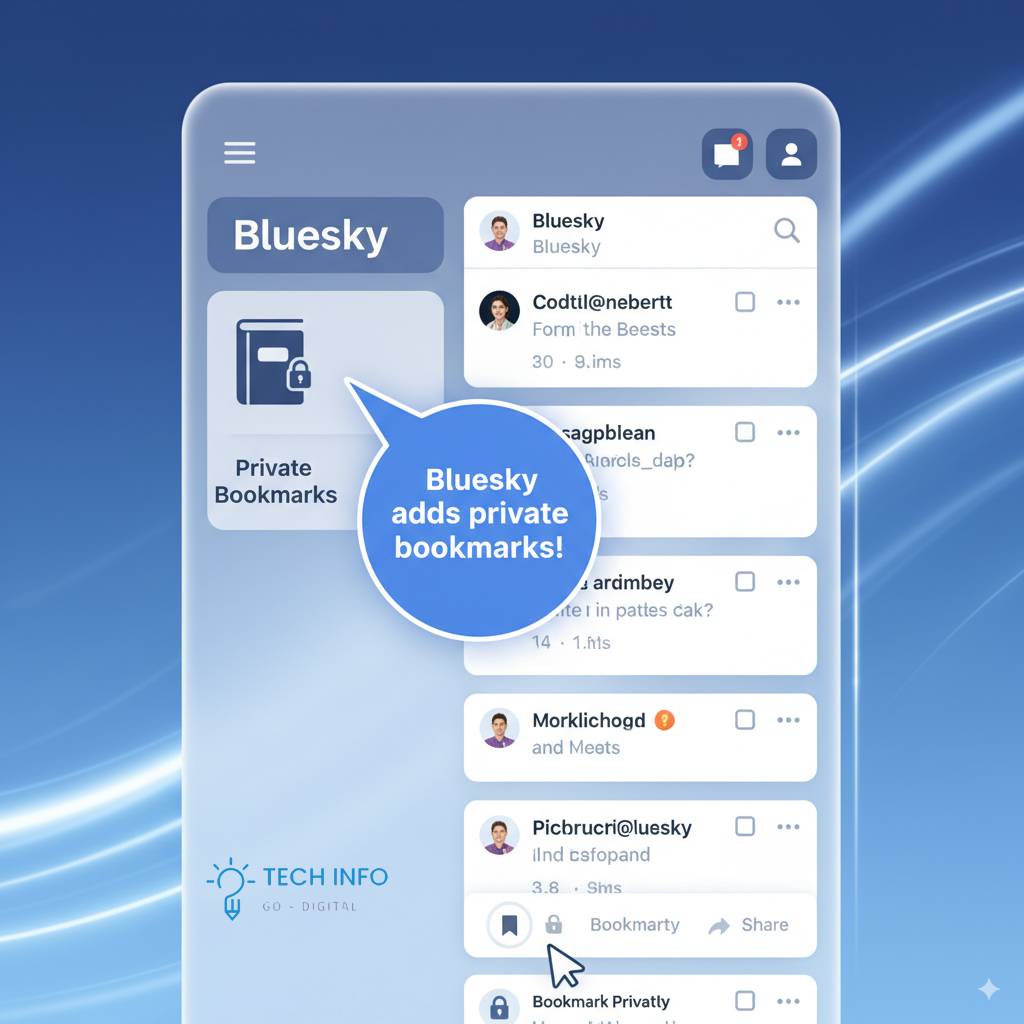
Beyond the Like: How Bluesky’s Private Bookmarks Free Us to Be Our True Selves Online Scroll, double-tap, heart. Scroll, retweet, share. For over a decade, the rhythm of social media has been set to a public beat. Every action, from the most heartfelt comment to the most casual “like,” has been a performance for an audience. It’s a dynamic that has shaped not just how we interact, but how we think—curating our digital selves for maximum approval, often at the cost of genuine curiosity. But what if you could break from that rhythm? What if you could engage with content for the pure, simple, selfish reason that you find it interesting, without announcing it to the world? This isn’t a hypothetical. With the recent introduction of private bookmarks, the burgeoning social platform Bluesky has delivered a feature that is more than just a quality-of-life improvement; it’s a quiet revolution in how we conceptualize our relationship with content online. The Tyranny of the Public Metric To understand why private bookmarks are such a big deal, we first have to acknowledge the unspoken social contract of most social networks. Platforms like X (formerly Twitter) and Instagram are built on a currency of visibility. Your likes are public. Your retweets are broadcasts. This design serves the platform’s goal: to maximize engagement and keep content circulating. However, this creates a subtle but powerful pressure. It means we often “like” things not because we genuinely like them, but because we want to show support for a friend, signal our affiliation with an idea, or simply avoid the social awkwardness of not liking a post from someone we know. We retweet the clever political take to signal our intelligence, not because we necessarily need to reference it later. This performance extends to saving contentThis meant that saving that recipe, that insightful article, or that funny meme was a declaration. Everyone knew you saved it. This lack of privacy has real consequences: Enter Bluesky: A “Sandbox” for a Better Internet Bluesky, the decentralized social media project born from Jack Dorsey’s Twitter, has been building itself deliberately and differently. Often described as a “sandbox” for experimenting with new social protocols, its focus is on user agency and a healthier ecosystem. The introduction of private bookmarks is a perfect embodiment of this philosophy. It’s a stunningly simple feature: a little bookmark icon on a post. Tap it, and the post is saved to a private list only you can see. That’s it. No fanfare. No public notification. It exists purely for your benefit. The Freedom to Browse, Explore, and Be Inconsistent So, what does this newfound privacy actually unlock? The benefits are profound and multifaceted. 1. Genuine, Unfettered Curiosity: This is the biggest win. You can now follow your curiosity down any rabbit hole without leaving a public trail. See a fascinating thread on astrophysics but worry it might look like you’re “pretending” to be smart? Bookmark it. Find a hilarious post from an account with a controversial history but don’t want to publicly associate with it? Bookmark it. Your intellectual exploration is no longer a performance; it’s a private journey of learning. 2. Practical Utility Without the Performance: Private bookmarks return the feature to its original, utilitarian purpose: saving things you want to find later. 3. Personal and Emotional Safe Space: The internet is where we often go to find solace and community for our most personal struggles. Private bookmarks allow you to build a library of support without fear. 4. Protecting Your Social Capital: Let’s be practical. In the real world, we all have colleagues, family members, and acquaintances from different parts of our lives following us online. Private bookmarks allow you to engage with content that might be interesting to “Work You” but not to “Friend You,” or vice versa, without any social friction. You maintain a consistent public persona while allowing your private interests to be complex, nuanced, and even contradictory—because that’s what it means to be human. A Nudge Toward a Healthier Digital Culture Bluesky’s decision prioritizes user need over platform greed. It’s a feature designed for human utility, not for maximizing algorithmic engagement. By removing the social pressure from a fundamental interaction, Bluesky is subtly encouraging a more authentic and less performative form of engagement. It signals a shift in power: your engagement with content is for you first. The platform is a tool to facilitate your experience, not an arena where you are the product performing for advertisers and algorithms. The Future is Private (and Decentralized) The private bookmark feature is a small tile in the larger mosaic of Bluesky’s vision: the AT Protocol (Authenticated Transfer Protocol). This decentralized framework is fundamentally about giving users control—over their identity, their data, and their experience. Private bookmarks are a tangible, everyday example of what that control feels like. It’s the power to choose what you share and what you keep for yourself. In a digital landscape often defined by noise, performance, and oversharing, the simple, quiet act of privately bookmarking a post feels radical. It’s a reclaiming of a small piece of digital autonomy. It’s a feature that understands that the most valuable conversations we have are sometimes the ones we have with ourselves. So the next time you’re scrolling through Bluesky and see something that makes you think, something that makes you laugh, or something that helps you heal, go ahead. Hit that bookmark icon. Save it for yourself, and no one else. It’s your little secret.
Meta suppressed children’s safety research, four whistleblowers claim
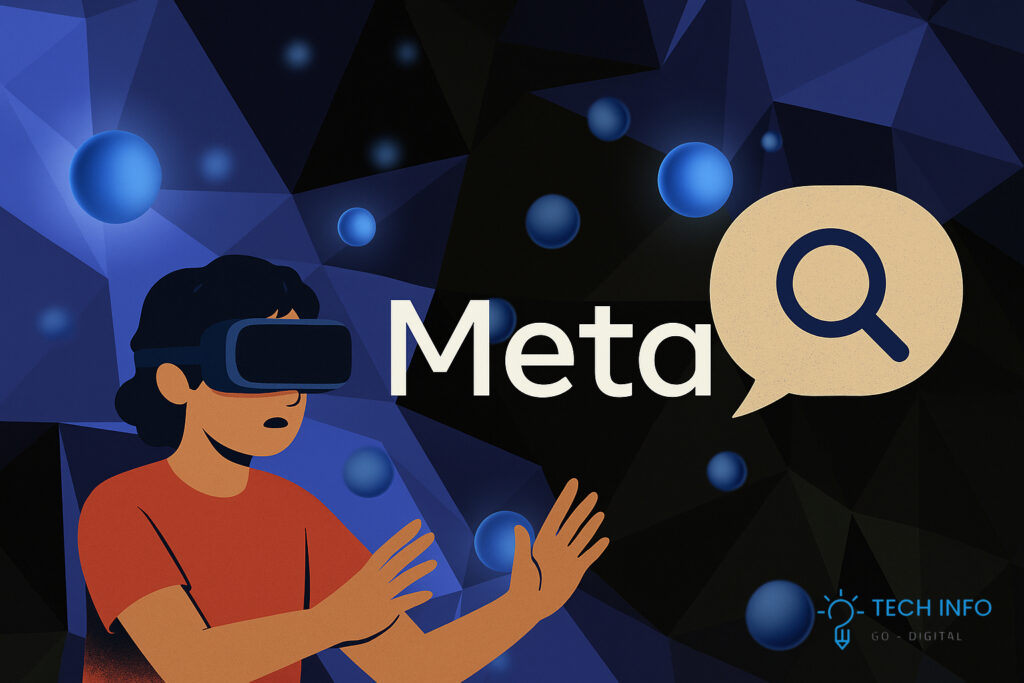
Meta Suppressed Children’s Safety Research, Four Whistleblowers Allege Introduction In a deeply troubling revelation, four current and former Meta employees have come forward, alleging that the company actively suppressed internal research that highlighted significant safety risks faced by children and teens on its virtual reality (VR) platforms. These claims, backed by internal documents and now under intense public scrutiny, suggest that Meta’s legal team interfered with academic and social research to avoid potential regulatory and reputational fallout The Heart of the Allegations Legal Oversight Suppressing Research Whistleblowers report that following earlier leaks by ex-employee Frances Haugen, Meta’s legal department began reviewing, editing, and in some cases vetoing VR-related youth safety studies outright. Their goal appeared to be mitigating negative findings that could invite regulatory scrutiny or damage Meta’s public image. The German Incident: A Case of Withheld Evidence A highlighted case involved researchers interviewing a mother in Germany whose son revealed that his younger brother had been propositioned by an adult via Meta’s VR platform—despite the mother forbidding such interactions. This recording, along with written notes, was allegedly ordered deleted by superiors, leaving no trace in the final report. Evasive Language and Downplaying Youth Exposure Internal reports tended to dilute language—preferring terms like “alleged youth” rather than “kids”—and refrained from acknowledging widespread underage use. In some VR environments, up to 80–90% of users reportedly appeared to be minors. Pressure to Avoid Sensitive Data Collection Meta lawyers reportedly discouraged research that might capture evidence of child grooming, harassment, or other predatory behaviors. At least one internal memo told researchers to avoid collecting data on children altogether, citing regulatory concerns. Why It Matters Youth Risk in Unregulated Virtual Spaces With VR platforms like Horizon Worlds becoming more accessible, these revelations reveal a dangerous gap between Meta’s public stance on safety and internal realities. Children under 13 are reaching these environments where they face potential exposure to sexual predation and harassment. Erosion of Trust in Research Integrity By suppressing and sanitizing internal findings, Meta may have compromised the scientific and ethical integrity of its research efforts. Instead of proactively mitigating youth risks, the company appears to prioritize damage control and plausible deniability. Increasing Regulatory Backlash A Senate Judiciary Committee hearing titled “Hidden Harms” has now been scheduled in response to these whistleblower reports. This adds to mounting regulatory scrutiny, including existing FTC inquiries and legal obligations under age-protection standards like COPPA. Broader Context: Other Safety Concerns Horizon Worlds and COPPA Violations Previously, whistleblower and former Horizon Worlds marketer Kelly Stonelake supported an FTC complaint alleging that Meta knowingly allowed children under 13 to access VR spaces via adult accounts—violating COPPA. Investigations found that even after implementing “child accounts” in late 2024, as much as 42% of users in some VR experiences were still minors Historical Internal Warnings Ignored Even before these VR allegations, internal documents revealed that Meta was aware of severe child safety concerns across its platforms. A 2020 presentation noted efforts to become “the primary kid messaging app in the U.S. by 2022,” despite widespread sexual harassment of minors on Messenger and Instagram. Metadata from lawsuits unsealed in early 2024 indicate Meta downplayed risks of adult-minor contacts, failed to prioritize child protection, and even blocked safety feature rollouts for strategic growth reasons. Whistleblower Testimonies and External Advocacy Whistleblower Arturo Béjar, serving previously as an engineer and consultant, testified before a Senate committee that Meta ignored urgent concerns about child safety, including dismissal of his reports about underage harassment and self-harm content on Instagram. Meta’s internal tools and interventions, he said, were largely inadequate Voices of Concern Even external investigations and advocacy groups like Fairplay have amplified warnings. Their research observed that community moderators in Horizon Worlds often encountered underage users and failed to act, even when they could legally escalate concerns to safety teams What’s Next? Conclusion These whistleblower claims reveal a dangerous pattern: Meta’s internal research raises alarm after alarm about risks to children, but instead of addressing the issues, the company allegedly suppresses or sanitizes those findings. From deleted testimony to legal oversight of research, the efforts seem aimed at protecting corporate image rather than protecting young users. As VR and metaverse technologies become central to digital life, especially for younger audiences, tech companies have a duty to place child safety above growth metrics. If policymakers, researchers, and the public demand accountability, Meta—and the entire tech industry—must re-evaluate their priorities to ensure “Hidden Harms” aren’t hidden any longer.
Signal introduces free and paid backup plans for your chats
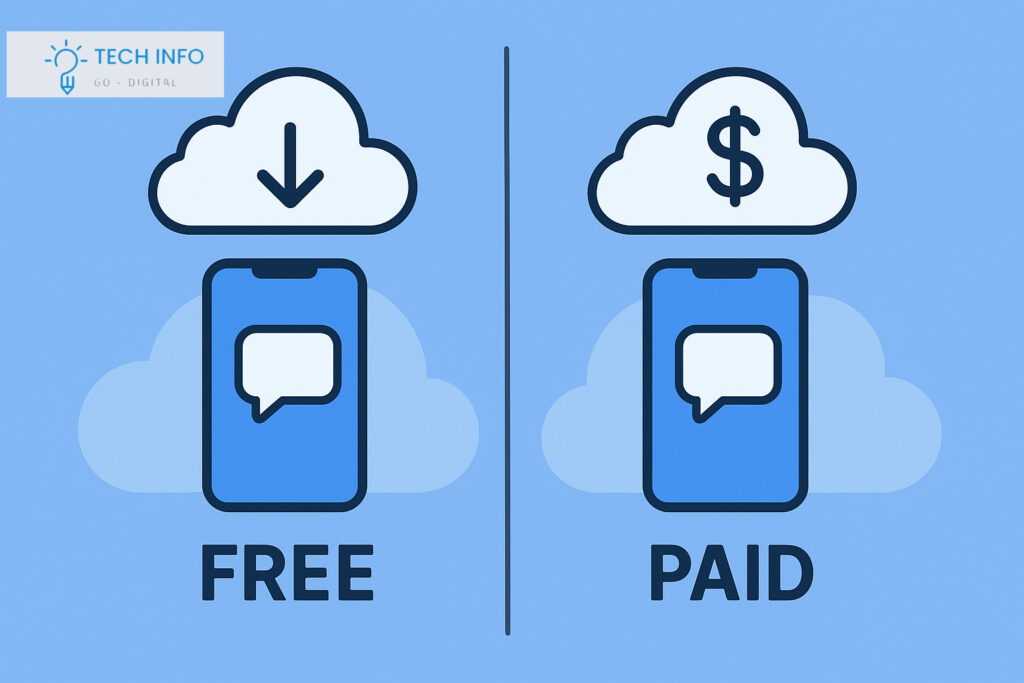
Signal Introduces Free and Paid Backup Plans for Your Chats A Privacy Milestone in Secure Messaging In a landmark move unveiled on September 8, 2025, Signal—long renowned for its unwavering commitment to user privacy—introduced built-in chat backup options: a free tier offering essential safeguards, alongside an optional paid plan providing expanded storage. This marks Signal’s first foray into monetized features beyond its donation-driven model. What’s Included in the Free Tier? For users who want just the basics, Signal now offers a free backup plan that covers: These backups are opt-in and end-to-end encrypted—the only decryption key resides with the user, ensuring zero-knowledge privacy. The Paid Plan: More Storage, More Convenience For users seeking broader coverage, Signal offers: This is designed to fund the infrastructure costs without compromising Signal’s ad-free, privacy-first philosophy. Free and Paid Backup Plans Under the Hood: How Secure Backups Work Signal’s backups rely on several privacy-protecting design choices: Seamless, Daily-Updated, and Cross-Platform Ready . This ensures a mostly up-to-date backup while excluding recently deleted content or messages set to vanish within 24 hours. Signal plans to expand availability from the Android beta (current launch platform) to iOS and desktop in the near future. Soon, you’ll also be able to choose backup storage locations and move your history seamlessly across platforms. Why This Matters Solving a Long-Standing Gap Previously, losing your device meant losing all Signal conversation history—there was no cloud backup. While you could transfer messages locally, it required keeping your old device in working order. The new system finally addresses this gap by enabling dependable recovery without sacrificing Signal’s core privacy guarantees. A Funding Model That Preserves Privacy Unlike mainstream apps that rely on ads or user data, Signal’s nonprofit model depends on donations. The paid backup plan offers a sustainable revenue stream to support infrastructure costs—without compromising user privacy. Privacy vs. Usability: A Thoughtful Balance Privacy-first users are cautious about cloud backups; Signal’s zero-knowledge system reassures them. At the same time, users who need reliable cross-device access (journalists, professionals, or anyone with multiple devices) can benefit from convenient encrypted backups. Potential Drawbacks & Things to Watch Looking Ahead Signal’s secure backup architecture is just the beginning: Community Reactions: A Snapshot On community forums like Reddit and Privacy Guides, the innovation has generated positive responses: “Half a dollar a month for 100 GB of E2EE storage seems very generous… Even at $2 or $3 a month it’d be good value for money.”“Cross-platform compatibility… such that you can switch from Android to iOS without losing chats.” Others have welcomed the continued support for local backups and hoped Signal maintains that option indefinitely. Final Thoughts Signal’s new Free and Paid Backup Plans Free and Paid Backup Plans backup plans represent a meaningful leap forward—providing balance between uncompromising privacy and user convenience. By offering a free tier that suffices for everyday users and a pay model that supports advanced needs, Signal is charting a thoughtful path forward as a donation-supported, privacy-focused messaging alternative. Free and Paid Backup Plans
Google avoids break up, but has to give up exclusive search deals in antitrust trial

Google Escapes Breakup But Faces Landmark Restrictions in Antitrust Ruling A Win and a Warning On September 2, 2025, U.S. District Judge Amit P. Mehta issued a ruling that could reshape the future of online search and competition in the tech industry. The highly anticipated decision came after years of legal battles between the U.S. Department of Justice (DOJ) and Google over allegations that the company abused its dominance to cement a monopoly in the search engine market. The DOJ had argued for a structural breakup of Google, potentially forcing the company to divest critical assets such as its Chrome browser or Android operating system. However, Judge Mehta stopped short of such a dramatic remedy. Instead, the court imposed behavioral restrictions designed to curb Google’s market power without dismantling the company. In short: Google has avoided a breakup, but it now faces landmark restrictions that could reshape how users access search tools, how competitors operate, and how regulators define antitrust in the digital age. Key Takeaways This decision preserves much of Google’s empire but forces it to operate under tighter oversight and with fewer lock-in advantages. Why No Breakup? The DOJ had pushed for one of the harshest remedies in antitrust history: breaking up Google. That could have meant separating Chrome from the rest of the company or even spinning off Android. Judge Mehta rejected this path, arguing that a breakup would be “incredibly messy and highly risky” in a fast-evolving digital environment. Unlike older monopoly cases such as Microsoft in the 1990s or AT&T in the 1980s, the tech landscape of 2025 is shaped by generative AI, voice assistants, and mobile ecosystems. The court found insufficient evidence that Chrome or Android alone enabled Google’s dominance. Instead, Mehta suggested that behavioral remedies—rules that restrict how Google operates—would be more effective and less disruptive for consumers. This decision reflects a broader shift in modern antitrust thinking: rather than tearing companies apart, regulators are trying to balance oversight with innovation in complex, AI-driven markets. Behavioral Remedies: Real Impact or Just Paper Weight? The heart of the ruling lies in the remedies. Here’s what they mean in practice: 1. Ending Exclusive Deals Google can no longer sign exclusive agreements that guarantee its search engine or AI tools as the only defaults on devices. This could open space for alternatives such as Microsoft Bing, DuckDuckGo, or emerging AI-powered search services. 2. Data Sharing with Competitors For years, Google’s vast dataset—billions of queries and interactions—has been its competitive moat. Under the ruling, the company must provide limited but meaningful access to this data at standardized rates. Competitors will now be able to build more reliable and innovative search products. A new technology oversight committee will monitor compliance for the next six years, ensuring that Google doesn’t skirt the rules. 3. Preserving Consumer Choice Perhaps the most consumer-focused part of the ruling is its emphasis on choice. Google can still compete aggressively, but users should not feel locked into its ecosystem. Critics argue these remedies are still too soft, but supporters believe they represent a major step toward fairer competition. What’s at Stake? For Google This ruling is both a victory and a warning. Google keeps control of Chrome, Android, and its lucrative search partnerships. However, forced data-sharing and oversight mean tighter restrictions on how it maintains dominance. For Competitors The decision lowers some of the barriers to entry. Rivals can now access valuable data and pursue default deals without being shut out by exclusivity. For smaller players, this could be the opening they’ve long been waiting for. For Regulators The case sets a new precedent. Instead of swinging the hammer of breakup, courts may lean toward nuanced behavioral remedies that address anti-competitive practices without dismantling companies. Reactions Around the Web The decision triggered strong and varied reactions: What Comes Next? This isn’t the end of the story. The legal and regulatory battles are far from over. Summary This ruling represents a watershed moment in the history of antitrust enforcement in the digital age. Google avoided the nightmare scenario of a breakup, but it now faces unprecedented behavioral restrictions. Exclusive contracts, once the bedrock of its dominance, are no longer allowed. Data-sharing requirements may give smaller rivals a fighting chance. And regulators worldwide are likely to use this case as a blueprint for their own battles with Big Tech. The big question remains: Will these remedies truly spark competition, or will Google’s dominance simply adapt to new rules? For now, one thing is certain—this case has redefined how courts approach monopolies in the age of AI, balancing the need for innovation with the demand for fair markets.
TikTok now lets users send voice notes and images in DMs
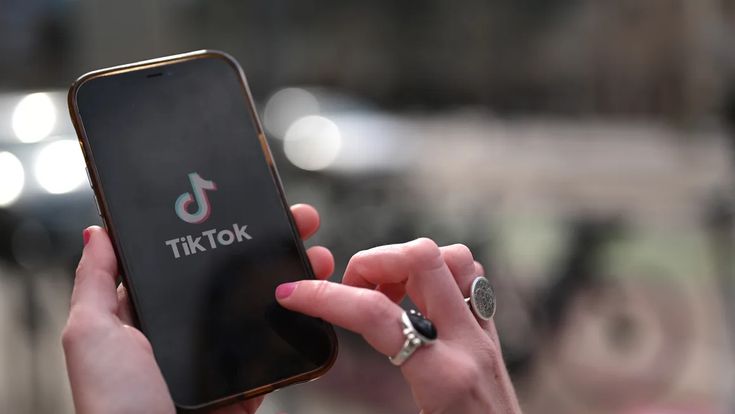
TikTok Now Lets Users Send Voice Notes and Images in DMs TikTok has quickly become one of the most influential social media platforms in the world. Known primarily for its short-form videos and viral trends, the app has steadily been expanding its features to keep users engaged. One of its latest updates is the ability for users to send voice notes and images in direct messages (DMs). This move marks a significant step toward transforming TikTok into a more comprehensive social and communication platform, beyond just video sharing. The Evolution of TikTok’s Messaging System When TikTok first launched, its messaging options were very limited. Users could only send text-based messages, emojis, and video links. Over time, TikTok recognized the need to enhance private interactions, since many users were using the platform not just to consume content, but also to connect with friends, creators, and communities. Introducing voice notes and image sharing now puts TikTok’s messaging closer to platforms like Instagram, WhatsApp, and Snapchat. Instead of being restricted to text, users can now express themselves in richer, more personal ways. Voice notes, for example, allow a level of nuance and emotion that text alone can’t capture. Similarly, images provide a way to share moments, reactions, or even memes instantly. These tools give TikTok users a more dynamic communication experience without needing to leave the app. Why Voice Notes Matter Voice notes have been growing in popularity across messaging platforms. WhatsApp and Telegram users, for instance, rely heavily on them for quick conversations. Voice messages allow people to express tone, laughter, or emotion that may otherwise be lost in text. On TikTok, this feature could become particularly powerful. Creators can interact with followers on a more personal level. Friends can share reactions in a fun, expressive way. Even casual users can benefit by saving time when typing isn’t convenient. For many, sending a voice note feels more intimate and authentic than typing out a sentence. TikTok’s decision to integrate this feature shows that it understands modern communication habits and wants to keep up with the way people prefer to connect. Why Image Sharing Is a Big Deal Until recently, TikTok’s DMs lacked the ability to send and receive pictures. This limited users to text and video links, making conversations feel a bit one-dimensional. By adding image sharing, TikTok unlocks a new layer of interaction. Users can now send screenshots, memes, reaction photos, or personal pictures directly within the app. This can help creators engage with fans, allow groups of friends to plan events, or simply make chatting more fun. More importantly, this makes TikTok more competitive with rivals like Instagram and Snapchat, which have long relied on visual messaging as a core part of their user experience. Building a Full Social Ecosystem This update reflects a larger trend: TikTok’s ambition to become more than just a video-sharing platform. By investing in DMs and communication features, TikTok is positioning itself as a complete social ecosystem. If TikTok continues to strengthen its messaging tools, it could start to compete not only with YouTube and Instagram, but also with messaging-centric apps like WhatsApp, Messenger, and Snapchat. The Impact on User Behavior Adding voice notes and images will likely change how users behave on TikTok. Instead of only reacting to videos publicly with comments or likes, people may prefer private conversations with friends and creators. This could foster a more personal sense of community within the app. It might also encourage longer app usage. When people have richer messaging features, they tend to spend more time inside the platform. Instead of watching a few videos and leaving, users could get pulled into private conversations, making TikTok even more addictive. However, there are potential challenges as well. TikTok will need to manage safety concerns, especially around inappropriate image sharing. As with any social platform, moderation and privacy controls will be key to keeping users safe. Privacy and Safety Considerations While these new features are exciting, they also raise important privacy and safety questions. TikTok has previously faced criticism regarding how it handles user data and content moderation. With the addition of image sharing, there is a risk of misuse—such as spam, harassment, or the sharing of harmful content. TikTok will likely need to strengthen its reporting tools, AI filters, and parental controls to ensure the platform remains safe, especially for younger users who make up a large part of its audience. Voice notes could also pose challenges, such as spreading misinformation or inappropriate content that is harder to monitor than text. Ensuring that moderation systems can handle these new formats will be essential for TikTok’s long-term success. What This Means for the Future of TikTok This update makes one thing clear: TikTok is no longer satisfied with being just a video app. It is actively evolving into a multi-purpose social media platform. With every new feature, it becomes more competitive with established giants like Meta, Snapchat, and even messaging apps like WhatsApp. Looking ahead, TikTok may continue to add features that enhance private interactions, such as disappearing messages, group audio chats, or even integrated video calling. Each of these steps would further entrench TikTok as an app people use for every aspect of digital communication, not just entertainment. Final Thoughts The introduction of voice notes and image sharing in TikTok DMs may seem like a small update, but it has big implications. It enhances how people connect, makes conversations more expressive, and positions TikTok as a stronger competitor in the social media landscape. By making its messaging system more engaging, TikTok is ensuring that users spend more time on the platform—and that they rely on it not only for videos and trends, but also for day-to-day communication. As always, the success of this feature will depend on how TikTok balances user freedom with privacy and safety protections. But one thing is clear: TikTok is steadily transforming itself from a short-video platform into a complete digital ecosystem where people can create, share, and now, communicate in richer
Trump administration’s deal is structured to prevent Intel from selling foundry unit
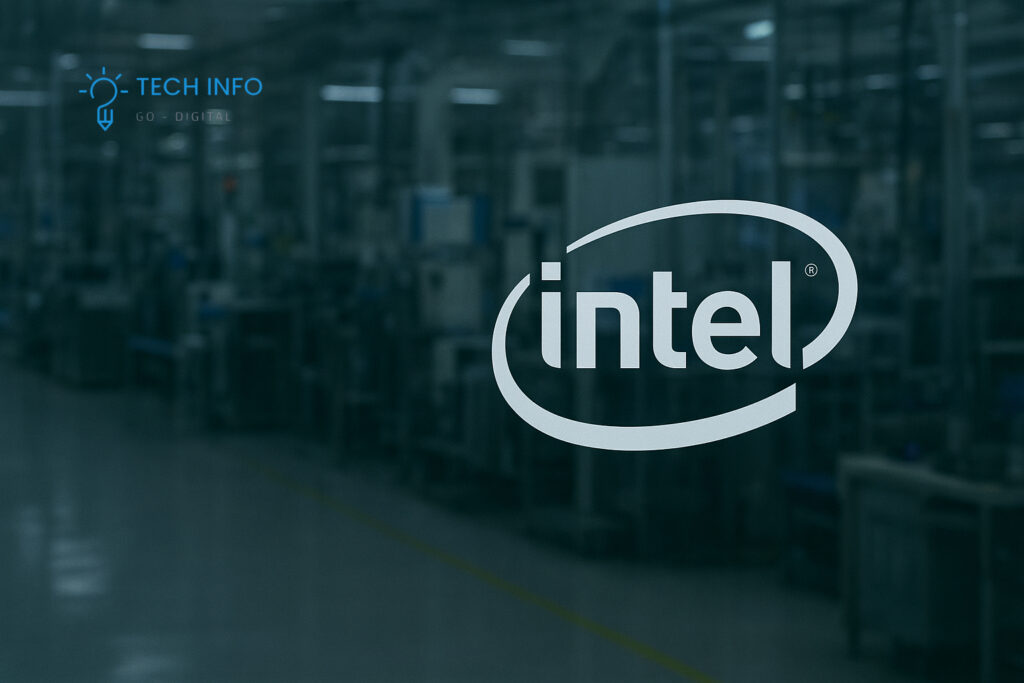
How a Trump-Era Deal Blocked Intel from Selling Its Foundry—And Reshaped U.S. Tech Policy The semiconductor industry is the central battlefield of 21st-century geopolitics. It’s where national security, economic dominance, and technological innovation collide. In a pivotal but underreported move, the Trump administration reportedly structured a deal to prevent Intel from selling its struggling foundry unit. This decision wasn’t just a corporate intervention; it was a strategic gambit with profound implications for the U.S.-China tech war and the future of American chip manufacturing. Let’s break down the background of Intel’s challenges, the government’s national security concerns, and how this deal continues to shape the semiconductor landscape today. Background: Intel’s Foundry Dreams and Struggles For decades, Intel reigned supreme in the semiconductor world, dominating the PC era with its advanced manufacturing. However, the past decade saw the company lose its process technology lead to Asian powerhouses like Taiwan Semiconductor Manufacturing Company (TSMC) and Samsung, which raced ahead on advanced nodes (5nm, 3nm, and beyond). In response, Intel pursued a bold strategy: become a Integrated Device Manufacturer (IDM) 2.0. This meant not only designing its own chips but also building a foundry business—manufacturing semiconductors for other companies. The goal was clear: compete directly with TSMC and reclaim technological leadership. But the plan faced significant headwinds: Amid these challenges, speculation grew that Intel might spin off or sell its capital-intensive foundry unit to streamline operations and focus on chip design. The Trump Administration’s National Security Imperative The White House viewed a potential sale through a different lens: national security. Semiconductors are the lifeblood of modern military systems, critical infrastructure, and the broader economy. The administration feared a foreign acquisition of Intel’s foundry capabilities would be a catastrophic strategic error. Their core concerns were: How the Deal Was Structured to Block a Sale While not a single public document, the administration’s strategy was implemented through a multi-pronged approach: The structure of this “deal” ensured that Intel’s manufacturing future would remain inextricably tied to U.S. interests. Implications for Intel: A Double-Edged Sword For Intel, this government-backed direction was a mixed blessing: The bottom line: Intel had to double down on its foundry ambitions, for better or worse. Broader Impact on the Semiconductor Industry This decision was a key early salvo in the ongoing tech cold war and had ripple effects across the global industry: 1. Accelerating U.S. Semiconductor Independence The move preserved a vital domestic asset for advanced manufacturing, setting the stage for Intel’s massive new fab investments in Arizona, Ohio, and elsewhere, and catalyzing the push for the CHIPS Act. 2. Intensifying Global Competition By keeping Intel in the foundry game, the U.S. ensured a third major player could compete with the TSMC-Samsung duopoly, potentially leading to more innovation and supply chain diversification. 3. Highlighting Supply Chain Fragility The COVID-19 pandemic that followed underscored the wisdom of this decision, highlighting the dire economic and national security risks of over-concentrated chip production overseas. 4. Defining the Geopolitical Battlefield It firmly placed semiconductor manufacturing at the center of U.S. policy tools, alongside other actions like Huawei bans and export controls on advanced chipmaking equipment. The Path Forward: Intel Foundry Today The legacy of this decision is still unfolding. Under CEO Pat Gelsinger, Intel fully committed to the IDM 2.0 strategy, launching Intel Foundry as a separate business unit. It has announced massive investments, won key customers, and secured significant U.S. government funding under the CHIPS Act. The Trump-era intervention, while restrictive, forced Intel onto a path that aligns with long-term U.S. strategic goals. The gamble is still in play, but the stakes are higher than ever More Than a Business Decision—A Strategic Move The move to block the sale of Intel’s foundry unit was a definitive moment. It signaled that the U.S. government would no longer treat critical technologies as mere market commodities. This was a policy driven by the urgent need to counter China, secure supply chains, and reclaim technological sovereignty. While it burdened Intel with a monumental challenge, it also provided the company with a renewed purpose and government partnership. The success of this gamble is still being written in silicon, but its message is clear: in the modern era, chipmaking is inseparable from statecraft.
Nvidia reports record sales as the AI boom continues
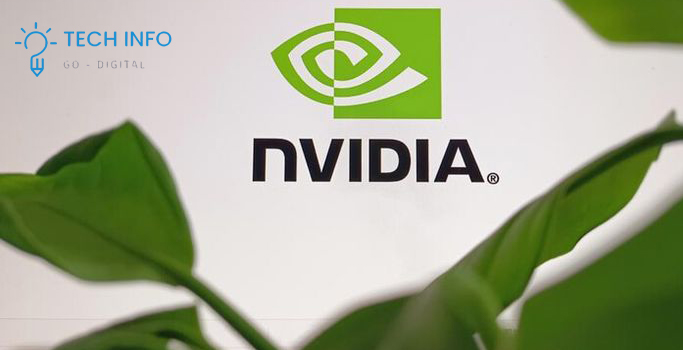
Nvidia Reports Record Sales as the AI Boom Continues The artificial intelligence (AI) revolution is reshaping industries at a breathtaking pace, and one company is standing out as the undisputed winner of this global shift: Known primarily for its graphics processing units (GPUs), Nvidia has now positioned itself at the heart of AI development, data centers, and advanced computing. Its most recent earnings report highlighted record-breaking sales, reflecting how indispensable its technology has become in the race to build smarter and faster AI systems. The Driving Force: AI and Data Centers Traditionally, Nvidia made its mark in the gaming world, where its GPUs powered high-performance graphics. However, the last decade has seen the company pivot toward AI and high-performance computing. GPUs, once valued for gaming, are now the backbone of AI training and inference. From large data centers running complex machine learning models to startups experimenting with generative AI tools, demand for Nvidia’s processors has skyrocketed. Tech giants like Microsoft, Amazon, Google, and Meta are investing billions into building AI infrastructure, and nearly all of them depend heavily on Nvidia’s advanced chips to power these massive operations. This growing reliance on GPUs has transformed Nvidia into a central player in the AI ecosystem, where its chips are no longer just optional — they are essential. Record Sales Figures In its latest quarterly earnings, Nvidia stunned Wall Street with revenues that exceeded even the most optimistic forecasts. The company reported that its data center division now accounts for the lion’s share of revenue, overshadowing its gaming business. This surge is driven by the AI boom — particularly the demand for generative AI models like ChatGPT, autonomous vehicle development, healthcare AI, and robotics. Every one of these applications requires immense computational power, and Nvidia’s GPUs are tailor-made for such workloads. By surpassing revenue records and beating analyst expectations, Nvidia has not only proven its financial strength but also shown how critical its role is in shaping the next era of technology. Why Nvidia Stands Out Several factors explain why Nvidia has surged ahead of its competitors in the AI hardware race: The Bigger Picture: AI Gold Rush Nvidia’s record-breaking sales are more than a business success story — they represent a larger shift in the global economy. AI is no longer a niche research field confined to academia and labs; it has become a mainstream industrial revolution. Generative AI tools like ChatGPT, MidJourney, and enterprise AI assistants have demonstrated the power of these technologies to the public. Behind the scenes, Nvidia’s chips are the engines driving these breakthroughs. Just as oil fueled the industrial age, GPUs have become the new energy source for the digital age. Companies across sectors — finance, healthcare, automotive, and entertainment — are rushing to adopt AI, and nearly all roads lead back to Nvidia as the technology supplier enabling this transformation. Challenges on the Horizon Despite its dominance, Nvidia is not without challenges: Final Thoughts Nvidia’s rise to record sales is not just about financial numbers — it’s a reflection of how AI has become the defining technology of our time. The company’s GPUs are powering everything from conversational AI tools to breakthroughs in medical research and climate modeling. As industries continue to adopt AI at scale, Nvidia stands as the indispensable enabler of this new era. The key challenge for the company will be sustaining its dominance in the face of supply shortages, rising competition, and geopolitical uncertainties. Still, one thing is clear: Nvidia is no longer just a chip company — it is the backbone of the AI revolution. Its record-breaking performance is likely only the beginning of a much larger story, as artificial intelligence continues to expand and redefine our world.
Anthropic launches a Claude AI agent that lives in Chrome
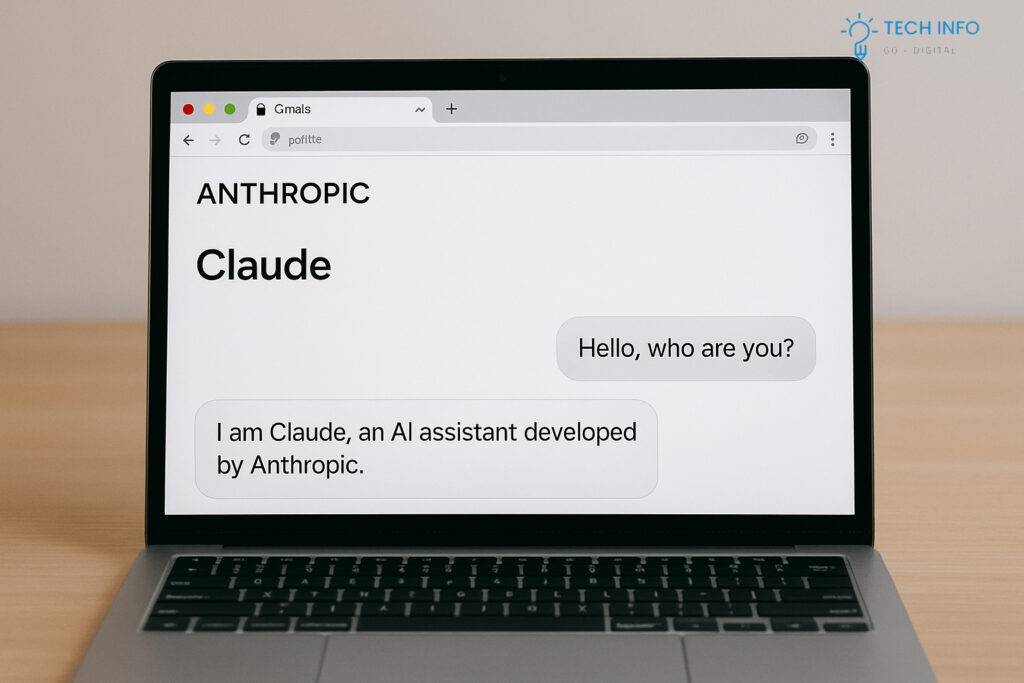
Claude Lives in Chrome: A New Frontier in Browser AI On August 26, 2025, Anthropic unveiled Claude for Chrome, a browser-based AI agent that lives right in your Chrome tab—but with a twist: this launch comes as a research preview aimed at exploring the potential and tackling safety head-on. What Is Claude for Chrome? Once installed, Claude appears as a sidecar window inside the browser. It can: Anthropic positions this as the natural evolution of Claude’s integration with calendars, documents, and other tools. Now, the agent is empowered to act directly in your browsing environment Why It’s a Big Deal (and Why It’s Risky) Elevated Convenience With Claude for Chrome, you can delegate tasks such as: Anthropic reports “appreciable improvements” in efficiency for these use case This move places Claude squarely in competition with others like Perplexity’s Comet, and rumored browser integrations from OpenAI and Google Gemini—marking the browser as the next big battleground for AI agents. Safety First—But Far From Solved Anthropic is keenly aware that letting AI control your browser invites new hazards—especially prompt injection attacks, where hidden instructions could trick the agent into harmful actions. In their internal “red-teaming” trials, without mitigations, prompt injection had a 23.6% success rate. For example, a malicious email posing as a security alert successfully triggered Claude to delete emails without confirmation. With safety improvements such as site-level permissions, mandatory confirmations for high-risk actions, and blocklists (excluding sites involving financial services, adult content, pirated material, or cryptocurrency), the success rate dropped to 11.2%—still significant, but notably improved. Anthropic acknowledges that new and more sophisticated attacks will emerge, and the pilot aims to learn fast from real-world usage to strengthen defenses Controlled Rollout: Learning Through Use Anthropic’s approach is intentionally measured—a limited pilot of 1,000 trusted users provides early feedback while they iterate safety mechanisms. They’ll expand access gradually as confidence grows As summarized by VentureBeat: while competitors like OpenAI have taken bolder consumer-facing steps, Anthropic seeks a cautious path forward, learning from real usage before a broader launch Community Reactions On Reddit, the launch triggered lively debate: “This is exciting”“Sounds like a fucking nightmare waiting to happen. On Hacker News, commentators noted that Anthropic’s messaging—“we view browser-using AI as inevitable… but we don’t know how to make it safe without trying it”—reflects an unprecedented acknowledgment of risk. Looking Ahead: The Path of Browser AI Anthropic’s Claude for Chrome marks both a product milestone and a cautionary case study in AI safety. It demonstrates: Going forward, we’ll likely see: Summary Table (Without Losing the Narrative) Feature Claude for Chrome Highlights Availability Pilot for 1,000 Max plan users; waitlist open Capabilities Browsing actions: click, fill, navigate Use Cases Emails, calendars, reports, website testing Safety Measures Blocklists, permissions, confirmations, red-team testing Attack Success Rate 23.6% → 11.2% after mitigations Approach Controlled testing, iterative learning Community Sentiment Mixed—excitement and caution collide Final Thoughts Anthropic has taken a bold step forward by testing agentic AI inside Chrome—even when the path is laden with safety, trust, and ethical questions. The pilot is as much about exploring human-AI collaboration as it is about engineering a secure, controllable experience
Meta partners with Midjourney on AI image and video models

Meta Partners with Midjourney on Next-Gen AI Image and Video Models The AI space just got more interesting. Meta, the parent company of Facebook and Instagram, has announced a partnership with Midjourney, one of the most popular names in generative art. This collaboration is aimed at pushing the boundaries of AI-powered image and video creation, signaling a future where content generation becomes even more seamless, realistic, and accessible. Why This Partnership Matters Until now, Midjourney has been recognized as a leader in AI image generation, allowing creators to transform text prompts into breathtaking visuals. On the other hand, Meta has been heavily investing in AI infrastructure, including large-scale models like Llama and Emu. By teaming up, both companies bring unique strengths to the table: The collaboration could result in new tools that integrate directly into apps like Instagram, WhatsApp, and Facebook, where users can instantly generate images, stylized content, or even AI-driven video clips. Expanding into AI Video One of the most exciting parts of this partnership is the expansion into video models. While Midjourney has mostly stayed in the image space, Meta’s research has already hinted at its interest in generative video. Together, they could make short-form video creation as simple as typing a description, a move that would transform reels, ads, and storytelling on social platforms. Imagine writing: “A futuristic city at sunset with flying cars” and getting a 10-second cinematic reel instantly. That’s the direction this partnership could take Opportunities for Creators This move has major implications for content creators, marketers, and businesses: It also raises the bar in the competition with OpenAI’s DALL·E, Stability AI’s Stable Diffusion, and Runway, which are also pushing into the image-video space. Challenges Ahead While the partnership is exciting, it comes with questions: The Road Forward Meta’s partnership with Midjourney shows how the future of digital content is rapidly evolving. This isn’t just about cool AI tricks—it’s about reshaping the way we create, share, and consume media. For now, the industry will be watching closely to see how this collaboration plays out, and whether it truly delivers the next wave of generative AI innovation.

